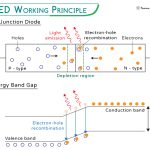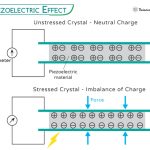LC Circuit
An LC circuit, also known as a resonant or tank circuit, is an electrical circuit that consists of two key components: an inductor (L) and a capacitor (C). The inductor is a coil of wire that stores energy in the form of a magnetic field when current flows through it. On the other hand, the capacitor is a device that stores energy in the form of an electric field when a voltage is applied across its plates. When these two components are connected, they form a system capable of oscillating electrical energy back and forth between the magnetic field of the inductor and the electric field of the capacitor.
Types of LC Circuit
Series LC Circuit
In a series LC circuit, the inductor and capacitor are connected one after the other in a single loop or path. It means that the same current flows through both components and continues in this loop.
Parallel LC Circuit
In a parallel LC circuit, the inductor and capacitor are connected side by side, forming two separate branches. It means that the current flowing through the inductor is different from the current flowing through the capacitor. The total current in the circuit is split between these two components, depending on their characteristics.
Resonance in LC Circuit
In an LC circuit, resonance is a special condition that occurs when the energy stored in the inductor and the capacitor is perfectly balanced, causing the circuit to oscillate at a particular frequency.
The capacitor stores energy in an electric field when it is charged, while the inductor stores energy in a magnetic field when current flows through it. During resonance, these two components continuously exchange energy. When the capacitor is fully charged, it begins to discharge, sending current through the inductor. This current generates a magnetic field in the inductor, which then collapses and returns the energy to the capacitor, repeating the cycle.
This back-and-forth transfer of energy creates oscillations, much like a pendulum swinging back and forth. The frequency at which this energy transfer happens is called the resonant frequency and is given by the formula:
Where
– L is the inductance of the inductor
– C is the capacitance of the capacitor
The resonant frequency depends on both these values; smaller inductors or capacitors lead to a higher resonant frequency, while larger values lead to a lower one.
At resonance, something important happens: the impedance, which is the total opposition to current flow in the circuit, is at its lowest point in a series LC circuit. It means that the circuit allows the maximum amount of current to flow. This property of resonance is what makes LC circuits useful in many applications.
Applications
Tuning Circuits: LC circuits are essential in radios, televisions, and other communication devices for selecting a specific frequency from a wide range of signals. By adjusting the values of the inductor and capacitor, the circuit resonates at a desired frequency, allowing it to pick up only that signal.
Filters: LC circuits are used to filter signals in electrical devices. They can act as:
– Low-pass filters: Allow low-frequency signals to pass while blocking higher frequencies.
– High-pass filters: Allow high-frequency signals to pass while blocking lower frequencies.
Band-pass filters: Allow a specific range of frequencies to pass, making them useful in audio and communication systems.
Oscillators: LC circuits can generate stable, specific frequencies when connected to amplifying devices. These oscillators are used in electronic equipment like signal generators, clocks, and radio transmitters.
-
References
Article was last reviewed on Wednesday, October 30, 2024









